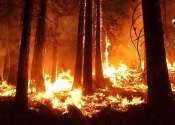How conservationists brought Melbourne's Merri Creek back from pollution, neglect and weeds
I met with a friend for a walk beside Merri Creek, in inner Melbourne. She had lived in the area for a few years, and as we walked beside the creek, past trees, native grasses, a small wetland echoing with frog calls, I talked ...









